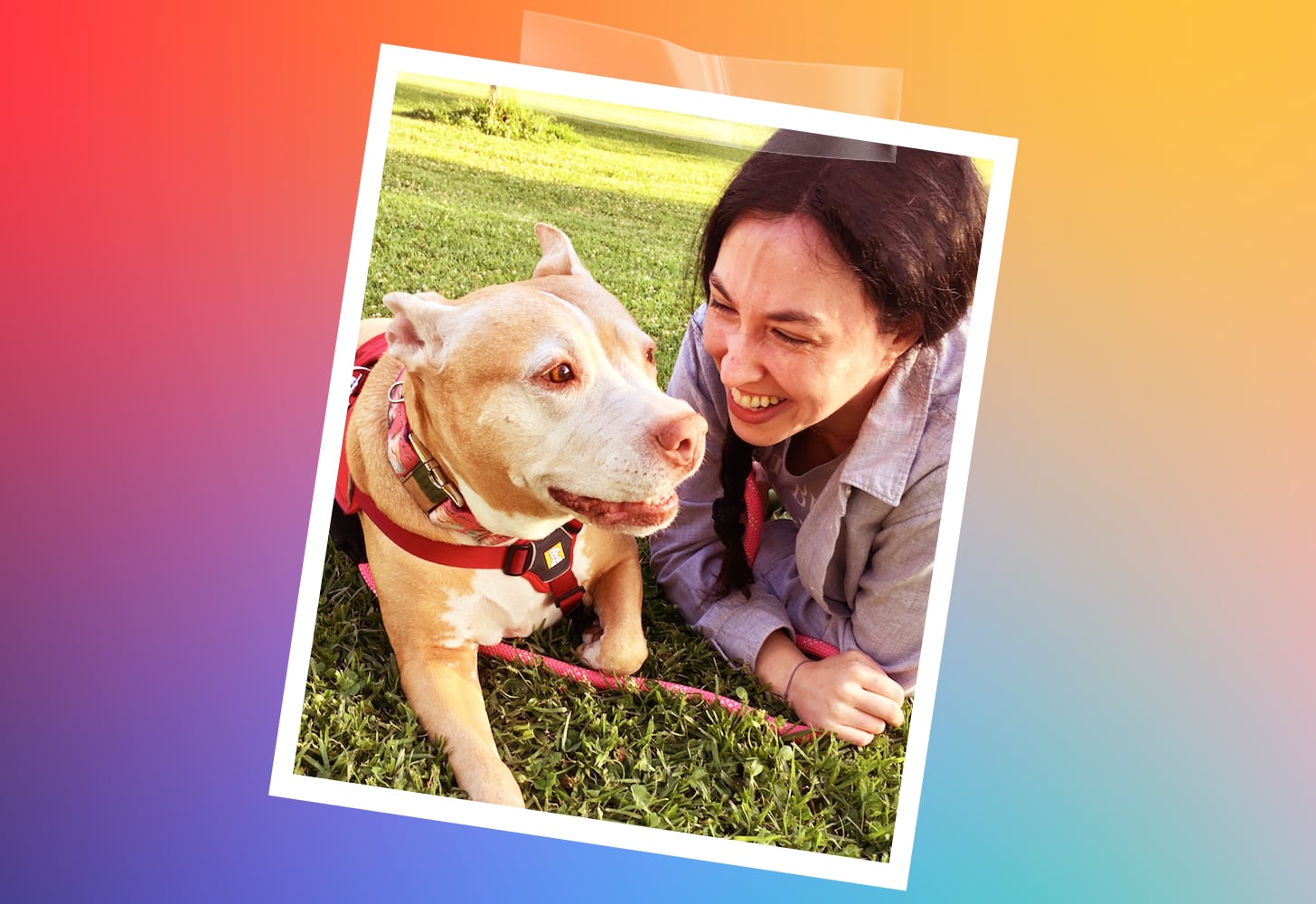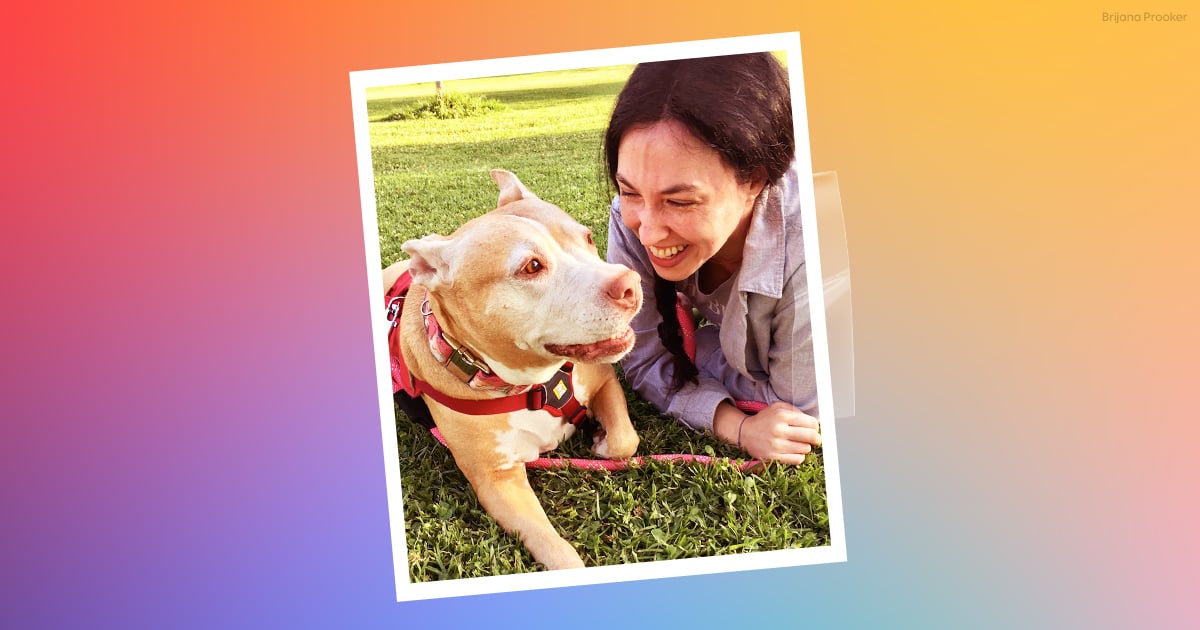
July marks Disability Pride Month, a time to commemorate the passage of the Americans With Disabilities Act and to celebrate the diversity, resilience, and visibility of the disabled community. This Disability Pride Month, we asked writers to share aspects of their identities and lives that they feel might be “invisible” to others. Check out our latest coverage here.
“I hope you don’t mind me asking, but what’s wrong with your legs?”
It was May 2021, and the kind of remark that made me wish it was a year prior, back when we were all still social distancing.
I have vasculitis, and my neighbor was referring to the bright red, swollen splotches — caused by bleeding under my skin from broken blood vessels — that overtook my calves and thighs. For a split second, I was 13 again, back in freshman algebra, speechless after a boy pointed at my legs and asked why I didn’t shave.
But I wasn’t going back. Because the rest of high school — hell, the rest of college and much of my 20s — was spent making up for being a late bloomer when it came to giving a damn about the male gaze. For almost two decades after a boy whose name I don’t remember critiqued my unshaven legs, I covered my “flaws” — in particular, the unsightly vasculitis that kept popping up — in clothes or body makeup. For even longer, I played the part of being “well.” I overcompensated for my illness by being excessively bubbly and energetic, masking my torture until (to everyone but me) my invisible disability really was invisible.
I performed wellness to friends, even after I was finally diagnosed.
When you live with a so-called invisible illness, it’s hard not to get caught up on the metaphor of invisibility. I started experiencing scary symptoms as a child, but, as is the case for far too many girls and women, doctors dismissed me for a decade — rendering my pain, and the autoimmune disease that causes it, invisible. No matter how many times I showed doctors my skin and asked for help, they insisted it was “just a rash” and that it was itchy, not painful (as if I didn’t know the difference). I decided that if doctors weren’t going to believe or treat my symptoms, I would go above and beyond to hide them. Doctors’ repeated dismissal convinced me no one wanted to look at my vasculitis or hear about how much it disabled me.
I performed wellness to friends, even after I was finally diagnosed with Sjögren’s syndrome (the cause of my vasculitis) my freshman year of college. Telling friends I was sick and could only hang out for a short while made me feel like I was finally taking care of myself. I’d bravely roll up my jeans to reveal bee-sting-looking welts (fresh vasculitis, triggered by whatever outing it was) as well as severe bruising from older vasculitis flares. The reaction to my skin was always equal parts horror and sympathy. But then, inevitably, I’d be asked to extend what was supposed to be a quick half-hour visit, “if you’re up to it.”
That was my cue to actually take care of myself, to listen as my veins throbbed and my body screamed “NO.” Instead, I’d discreetly cover my vasculitis back up and smile through pain as I acquiesced.
I was so depleted from acting “fine” that I could never find the words to express how much a “casual hang” could cost me: days, possibly weeks in bed — and so many spoons, I’d have to wait until next month for them to replenish. I played the part of “healthy enough” for the same reason I was polite and made sure to use lots of exclamation points: women are socialized not to be difficult, to accommodate everyone at our own expense. I hid my needs along with my skin (for a whopping 13 years after diagnosis) until a scary hospitalization when I turned 30 forced me to snap out of it.
While I may have succeeded in looking healthy, it had only made me sicker.
I learned in the hospital that my quest to look “pretty” — and conceal what I considered the “ugly” part of my disease — had caused permanent nerve and blood-vessel damage. My skin needed to breathe, not hide. So while I may have succeeded in looking healthy, it had only made me sicker. I determined then and there that my health is far more important than others’ comfort. Yet the invisibility metaphor still shadows me.
No one sees how awful it feels to wake up dizzy and exhausted, no matter how much extra sleep I get. No one sees how demoralizing it can feel to spend the first half hour of each day just trying to sit up in bed without blacking out. When I post the link to my latest article on social media, no one sees that it can take me hours to will the energy to write a single sentence. And often, I don’t even accomplish that. I’ll sit entirely still, ambition buzzing in my brain, a flood of dopamine illuminating words I need to say to feel alive. But too frequently, a crash comes as I reach for my laptop, the wave of exhaustion immediate and debilitating. Suddenly, there are no words, just weakness. And often, an unwelcome feeling of failure.
As my blood pressure plummets and my mind feels like it’s being entirely erased, I’ll occasionally wonder if I should post a selfie: “This is me failing to write — and attempting not to pass out. #ObviouslyNoFilter.”
I wish I was one of those disability advocates who documented my pain and flares, helping to make the invisible visible, but when I’m flaring and in pain, I’m in negative spoons, and the last thing I want to do is take pictures to post on social media. So my social feeds are filled with smiles and laughter — documentation of the moments I’m feeling joyful and well enough to post.
I’m done throwing friendliness around like confetti to distract from the fact that I’m chronically ill.
The giddy, effervescent part of me is also what most people see in real life. It’s not an act; it’s a very real and soul-deep element of who I am. Giggles and gleeful squeals pour out of me every time my dog, Ivy, rolls on her back to reveal her glorious pittie belly at the park. Anyone within a mile radius can I’m sure hear the spectacle we make as she instigates her silly game of kiss-or-crocodile, luring me to hover over her, never knowing if I’ll get upside-down kisses or if she’ll loudly RAWR and fake-snap at my arm, pretending to be a crocodile. Either way, I crack up — loudly — with delight.
But I don’t owe anyone ebullience. Despite living with an energy-depleting disease, I used to greet every neighbor with giant waves, huge smiles, and gobs of (often, unearned) pep. I’d kindly smile at my building manager when we crossed paths, even if he’d woken me up and scared my dog by pounding on our door that very morning, after I’d specifically asked him to text rather than knock.
Living through a pandemic with a chronic illness has made me reevaluate how I spend my very limited energy. I’ve found myself so entirely spent, as an immunocompromised person just trying to survive, that I will waste my spoons on no one. I’m done throwing friendliness around like confetti to distract from the fact that I’m chronically ill. I’m done smiling at someone who deserves an “eff you.” I’m shedding the role I play in making my illness invisible, because my worth isn’t determined by my appearance — or wellness.
There’s a reason my nosy neighbor could see and comment on my vasculitis: I had finally decided to prioritize my health over other people’s opinions. If my neighbor was hoping to embarrass me, she was out of luck. My legs were out, loud and proud (likely unshaven, too). Proof that I’m sick. Proof my invisible disability isn’t actually invisible, though much of my suffering is.
Image Source: Brijana Prooker
